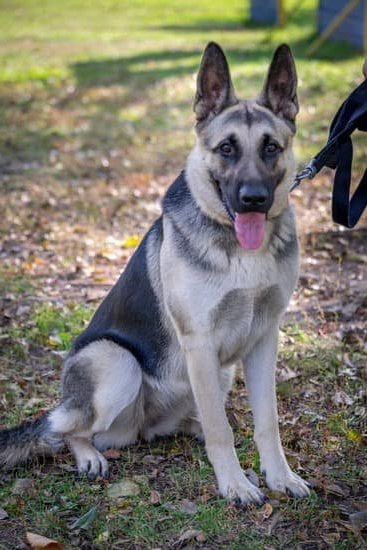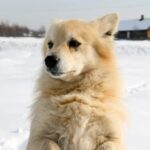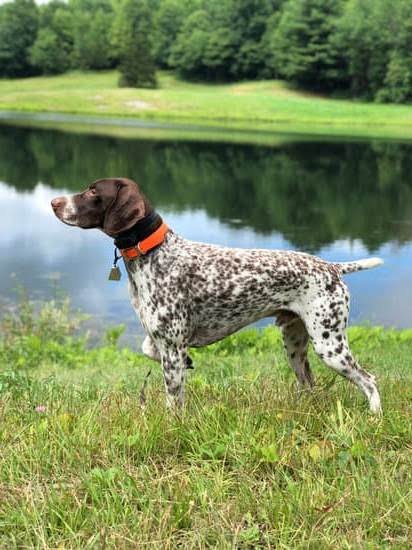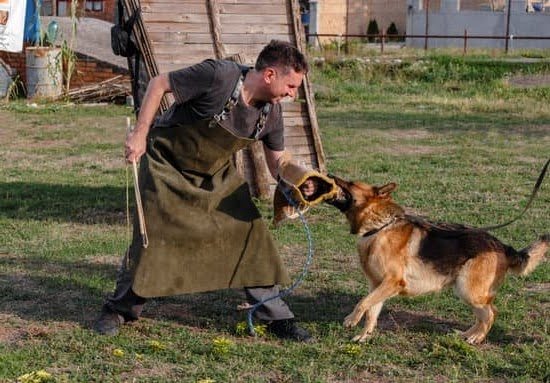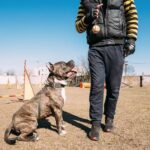Training dogs to run deer is a valuable skill for hunters and wildlife enthusiasts alike. This unique training allows dogs to use their natural abilities to track and chase deer, providing invaluable assistance in hunting activities and enhancing the overall experience for both humans and animals involved.
By understanding the purpose and benefits of training dogs to run deer, individuals can appreciate the significance of this practice. One major advantage is that it allows hunters to cover more ground efficiently, as dogs are able to follow scent trails that may be undetectable by humans alone. Additionally, well-trained hunting dogs can help flush out deer, ensuring a higher success rate during hunts.
In addition, training dogs to run deer creates a fulfilling bond between human handlers and their canine companions. It taps into the instincts and natural abilities of specific dog breeds, providing them with an outlet for their energy while engaging in activities they inherently enjoy. This not only benefits the dogs by allowing them to fulfill their inherent drives but also deepens the relationship between humans and animals through shared experiences in outdoor settings.
As we delve into the details of training dogs to run deer in this article, we will explore various aspects such as the best dog breeds suited for this pursuit, essential considerations prior to training, different techniques involved in developing advanced skills, addressing challenges and safety concerns, as well as maintaining performance over time.
Whether you are new to dog training or an experienced handler looking for further guidance, this comprehensive guide will provide you with valuable insights on how to train your dog effectively for deer running activities while ensuring responsible practices are followed every step of the way.
The Breeds Best Suited for Deer Running and Why
When it comes to training dogs to run deer, not all breeds are created equal. Some dog breeds possess the natural abilities and traits that make them particularly well-suited for chasing deer. These breeds excel in scenting ability, endurance, agility, and other key characteristics essential for successful deer running.
One example of a breed that is commonly used in deer running activities is the Coonhound. Known for their exceptional scenting ability, Coonhounds have an incredible sense of smell that allows them to track and follow the scent trail left by deer. They are also highly athletic and possess great stamina, which makes them ideal for pursuing fast-moving game like deer.
Another breed that is often favored for deer running is the Greyhound. Renowned for their incredible speed and agility, Greyhounds can quickly cover long distances with ease. This makes them valuable assets when tracking down elusive deer. Additionally, their sharp eyesight allows them to spot deer from a distance, aiding in the chase.
German Shorthaired Pointers are another popular choice for deer running due to their versatility and intelligence. These dogs have a strong prey drive and hold excellent tracking skills, making them adept at following the scent of a moving target like a deer. Their high energy levels and keen instincts further contribute to their success in this field.
No matter the breed chosen, it is important to remember that successful deer running relies on more than just physical attributes. The bond between handler and dog plays a crucial role in training outcomes as well. It is therefore important to select a breed that complements your own personality and training style while possessing the necessary physical capabilities for an effective partnership in hunting activities.
Essential Pre-Training Considerations and Preparations
Before embarking on deer running training with your dog, it is crucial to consider a few important factors to ensure the safety and readiness of your furry companion. Evaluating your dog’s physical and mental fitness before starting the training process is essential to prevent any potential health risks. Additionally, there are preparatory steps you can take to ensure that your dog is fully prepared for the training ahead.
One of the first steps in preparing your dog for deer running training is scheduling a veterinary check-up. A comprehensive examination by a veterinarian will help assess your dog’s overall health, identify any underlying medical conditions or injuries, and address them appropriately. This includes making sure that your dog is up to date on vaccinations to protect against common diseases they might encounter while chasing deer.
Physical conditioning exercises are also vital in preparing your dog for the physical demands of deer running. Gradually increasing their exercise routine helps build their endurance, strength, and cardiovascular fitness levels. Exercises like walking, jogging, or swimming can be incorporated into their routine to improve stamina and agility.
In addition to physical health considerations, it is important to evaluate your dog’s mental readiness for deer running training. Assessing their temperament, level of focus, and ability to handle distractions will significantly impact their success in chasing deer. Dogs with high prey drive and an instinctual urge to chase may be more inclined towards this type of training.
| Consideration | Tips |
|---|---|
| Veterinary Check-Up | Schedule a comprehensive examination by a veterinarian to assess overall health and update vaccinations. |
| Physical Conditioning Exercises | Incorporate regular exercises like walking, jogging, or swimming to improve endurance and agility. |
| Mental Readiness | Evaluate your dog’s temperament, focus, and ability to handle distractions before starting training. |
Building a Strong Foundation
The Importance of Basic Obedience Training
Before embarking on deer running training, it is crucial to establish a solid foundation of basic obedience training for your dog. Basic obedience training serves as a starting point for all advanced training stages, including deer chasing activities. This foundation not only ensures that your dog is well-behaved and responsive to commands but also enhances safety during the training process.
During basic obedience training, dogs learn essential commands such as sit, stay, recall (come when called), and heel (walking beside you without pulling on the leash). These commands form the building blocks that allow you to control your dog effectively and create a strong bond between you and your canine companion.
Essential Commands and Teaching Methods
To teach your dog these basic obedience commands, positive reinforcement techniques are highly effective. Using rewards such as treats, praise, and playtime helps motivate your dog and reinforces good behavior. Consistency is key – be clear and consistent in your verbal cues and hand signals so that your dog quickly learns to associate them with their corresponding actions.
Start with one command at a time, focusing on repetition and reinforcement until your dog consistently responds correctly. For example, when teaching the “sit” command, hold a treat close to your dog’s nose and slowly raise it above their head. As their nose follows the treat upwards, their bottom will naturally lower into a sitting position. Once they sit down completely, reward them with the treat immediately while praising them with positive words or affection.
It is important to keep training sessions short but frequent to maintain engagement and prevent boredom or frustration in both you and your dog. Aim for multiple 5-10 minute sessions throughout the day rather than one long session.
Laying the Foundation for Advanced Training Stages
Basic obedience training lays the foundation upon which more advanced deer running techniques can be built. The obedience commands established in this stage will be vital for controlling your dog during deer chasing activities, ensuring their safety and the safety of surrounding wildlife.
In addition to obedience training, it is important to continue reinforcing good behavior and maintaining a harmonious relationship with your dog. By consistently practicing basic obedience commands throughout your daily interactions, you will strengthen the bond with your canine companion and create a trusting partnership that is essential for successful deer running training.
Introducing Scent and Tracking Training
When training dogs to run deer, one of the most crucial skills they need to develop is their ability to track and follow scents. Understanding the role of scent in deer running and introducing your dog to various deer-related scents is essential in teaching them how to track and chase effectively. Here are some step-by-step instructions on how to train your dog in scent and tracking:
- Introduce Deer-Related Scents: Start by exposing your dog to deer-related scents such as urine, droppings, or fur. You can obtain these scents from local hunting stores or online suppliers. Begin by placing small amounts of the scent on a cloth or cotton ball and letting your dog become familiar with its smell.
- Establish a Tracking Trail: Once your dog has become comfortable with the scent, you can start creating a tracking trail for them to follow. Begin with short trails in familiar areas such as your backyard or nearby wooded areas. Lay down small amounts of the scent along the trail, gradually making it longer and more challenging as your dog progresses.
- Encourage Pursuit: As your dog follows the scent trail, encourage them with positive reinforcement such as verbal praise or treats at each successful stage of tracking. This will reinforce their behavior and motivate them to continue pursuing the scent.
- Gradual Increase in Difficulty: As your dog becomes more adept at following basic tracks, you can gradually increase the difficulty level by introducing more complex scents or using older scent trails that have been left for longer periods of time.
- Incorporate Distractions: In order to prepare your dog for real hunting scenarios, it’s important to expose them to distractions that they may encounter while tracking deer. This can include other animal scents, unfamiliar environments, or noises. Gradually introduce these distractions during training sessions to help desensitize your dog and teach them to stay focused on the deer scent.
Remember, scent and tracking training is a gradual process that requires patience and consistency. Start with short tracking sessions and gradually increase the duration and difficulty level as your dog progresses. With time and practice, your dog will develop strong scenting abilities, making them more effective in deer running activities.
Developing the Skills
Once your dog has a solid foundation in basic obedience training and has been introduced to scent and tracking, it’s time to advance their skills in deer running. This section will detail specific techniques and exercises that can enhance your dog’s deer chasing abilities.
One technique to develop your dog’s skills is by teaching them different patterns, such as zig-zagging, circling, and cornering. These patterns simulate the movements of a fleeing deer and can help your dog learn how to navigate through varied terrains while keeping the scent trail in focus. Use treats or toys to reward your dog for successfully executing these maneuvers.
Another important aspect of advanced deer running techniques is teaching your dog how to differentiate between different deer species and respond accordingly. By introducing them to various scents associated with different types of deer, you can train your dog to recognize the specific scent they are meant to track. For example, you can use urine or drags from different species like white-tailed deer, mule deer, or elk.
It’s important to note that advanced training techniques require patience and consistency. Start with shorter training sessions and gradually increase the duration as your dog becomes more comfortable and proficient. Keep in mind that not all dogs will progress at the same pace, so be flexible with your approach.
By developing these advanced skills in your dog, you’ll greatly increase their effectiveness in deer running activities. Remember to always prioritize safety during training sessions and ensure that you are following local laws and regulations regarding hunting practices.
Addressing Challenges and Potential Risks
Training dogs to run deer can be a thrilling and rewarding activity for hunters and wildlife enthusiasts. However, it is important to be aware of the challenges and potential risks that may arise during the training process. This section will discuss some common challenges faced in deer running training and provide solutions for these issues. Additionally, we will address safety concerns and emphasize the importance of responsible training practices.
- Distractions: One of the main challenges in deer running training is dealing with distractions that may divert the dog’s attention from tracking or chasing the deer. Dogs are naturally curious creatures, and they may easily get distracted by other animals, scents, or noises during a chase.
To overcome this challenge, it is crucial to gradually expose the dog to various distractions, starting with low-level distractions and gradually increasing their intensity. By incorporating distraction-proofing exercises into the training routine, you can teach your dog to stay focused on tracking or chasing deer despite potential distractions. - Over-Excitement: Dogs that are highly driven to chase deer may become over-excited during training sessions. Over-excitement can make it difficult for dogs to follow commands or maintain control while engaging in a chase. To address this challenge, it is essential to incorporate impulse control exercises into your training regimen. These exercises help calm down an excited dog and improve their ability to respond promptly to commands even in high-energy situations.
- Safety Concerns: It is essential to prioritize safety during deer running training both for you as the handler and your dog. Chasing deer involves various risks such as injury due to collisions, rough terrains or encountering other wild animals that may be protecting their territory or young ones. To ensure safety, always train your dog on a leash until they have shown reliable recall skills.
Gradually introduce off-leash training in controlled environments once your dog has demonstrated appropriate behavior around deer and has mastered basic commands. Additionally, invest in proper protective gear for both yourself and your dog, such as reflective vests or GPS collars, to make tracking and locating your dog easier during chase exercises.
By being aware of these challenges and risks and implementing the appropriate training strategies, you can create a safe and enjoyable experience for both you and your dog during deer running activities. Remember to always prioritize responsible training practices, maintain effective communication with your dog, and enjoy the adventure of deer running with your well-trained companion.
Maintaining and Improving Performance
Maintaining and improving performance is a crucial aspect of training dogs to run deer. Once the dog has been successfully trained in the basic skills and techniques of deer running, it is important to continue practicing and reinforcing those skills to ensure they remain sharp and reliable. Regular practice sessions, reinforcement through positive reinforcement, and challenging drills can all help maintain and improve the dog’s performance.
One effective way to maintain performance is by scheduling regular practice sessions. Consistency is key when it comes to training dogs, and having a set schedule for training will help both the dog and the handler stay committed.
It is recommended to have at least three training sessions per week, with each session lasting around 20-30 minutes. During these sessions, focus on reinforcing the basic commands, as well as practicing more advanced techniques like zig-zag patterns, circling, and cornering.
Reinforcement through positive rewards is another important aspect of maintaining and improving performance. Dogs thrive on positive reinforcement, so be sure to praise and reward the dog whenever they exhibit desired behavior or successfully execute a command during training. Rewards can include verbal praise, treats, or playtime with their favorite toy. By associating their good performance with positive rewards, dogs are more likely to repeat those behaviors in future training sessions.
In addition to regular practice sessions and reinforcement through positive rewards, challenging drills can also help maintain and improve the dog’s deer running skills. These drills should gradually increase in difficulty level over time, pushing the dog’s limits while still providing opportunities for success. For example, setting up mock hunting scenarios where the dog needs to track multiple scents or simulate various chasing scenarios can help improve their ability to differentiate between different deer species.
Overall, maintaining and improving performance in deer running requires consistent practice, reinforcement through positive rewards, and challenging drills that push the dog’s limits. By investing time and effort into ongoing training activities, handlers can ensure that their trained dogs are always ready for the thrill of deer running.
| Methods | Benefits |
|---|---|
| Scheduling regular practice sessions | Maintains consistency and commitment to training |
| Reinforcement through positive rewards | Motivates dogs to repeat desired behaviors |
| Challenging drills | Improves the dog’s ability to handle different scenarios during deer running |
Conclusion
In conclusion, training dogs to run deer can be a thrilling and rewarding experience for both hunters and wildlife enthusiasts. By understanding the purpose and benefits of this type of training, individuals can fully appreciate the significance that well-trained hunting dogs bring to deer chasing activities. Not only do these dogs possess natural abilities and traits that make them suitable for deer running, but they also play a vital role in enhancing the overall hunting experience.
Throughout this article, we have discussed the breeds best suited for deer running and explored their specific characteristics that make them ideal for this task. We have also emphasized the essential pre-training considerations and preparations, such as evaluating the dog’s physical fitness and ensuring necessary veterinary check-ups are conducted. Basic obedience training has been highlighted as a crucial foundation for deer running, along with introducing scent and tracking training to further develop the dog’s skills.
It is important to address the challenges and potential risks associated with deer running training while emphasizing responsible practices. Distraction, over-excitement, and safety concerns are common issues that may arise during training sessions. However, by implementing appropriate solutions provided in this article, individuals can mitigate these risks and ensure that both their dog’s safety and enjoyment are prioritized.
By maintaining regular practice, reinforcement, and engaging in challenging drills, individuals can continue to improve their dog’s deer running skills. Continuous training is essential for maintaining performance levels while allowing for further skill development. Ultimately, by embracing the adventure of deer running with a well-trained companion, readers can not only enjoy an exhilarating experience but also forge a strong bond with their loyal dog partner in responsible deer chasing activities.
Frequently Asked Questions
How do I train my dog to track deer?
Training a dog to track deer requires patience, consistency, and proper techniques. Start by introducing your dog to the scent of deer through items like antlers or deer hides. Allow your dog to become familiar with the scent and associate it with positive rewards like treats or playtime.
Gradually progress to placing the scent in different locations and encouraging your dog to follow it. Use commands such as “track” or “find” and reinforce them with rewards whenever your dog successfully follows the scent. Training sessions should be short, frequent, and engaging to keep your dog motivated.
How long does it take to train a dog to track a deer?
The duration of training required to teach a dog to track deer can vary depending on several factors including the individual dog’s breed, age, temperament, and previous training experience. On average, it may take several weeks to a few months of consistent training sessions for a dog to become proficient in tracking deer scents.
However, it is important to remember that every dog is unique and some may require more time while others may grasp it more quickly. Patience and dedication are key during the training process.
Does a dog need to be trained to track a deer?
While dogs possess innate instincts for tracking scents, they still need structured training to effectively track deer. Training helps refine their abilities and teaches them how to focus on the specific scent of a deer while filtering out other distractions in their environment.
Without proper training, a dog may struggle to differentiate between various scents or become easily distracted by other scents or movements in nature. By undergoing dedicated tracking training, dogs develop their skills and learn how to stay on track even when faced with challenging conditions such as crossing different terrains or navigating through dense vegetation.

Welcome to the blog! I am a professional dog trainer and have been working with dogs for many years. In this blog, I will be discussing various topics related to dog training, including tips, tricks, and advice. I hope you find this information helpful and informative. Thanks for reading!

